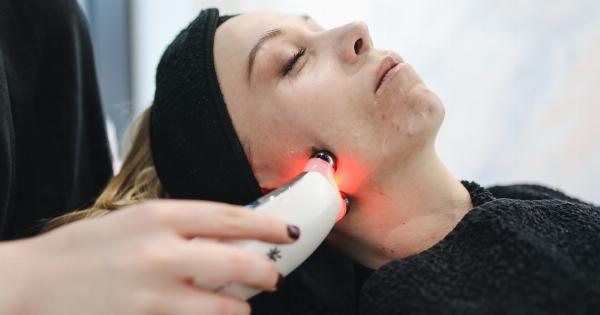Acne is a common skin condition that affects millions of people around the world.
While most pimples are harmless and can be easily treated with over-the-counter products, a recent study has revealed that a particular kind of pimple can be fatal if left untreated.
What is the Deadly Pimple?
The deadly pimple, medically known as a pyoderma gangrenosum, is a rare and often misunderstood skin condition. It usually begins with one or more small pustules, which quickly turn into deep, painful and rapidly spreading ulcers.
If left untreated, these ulcers can lead to serious complications such as sepsis, systemic inflammation, and even death.
What Causes Pyoderma Gangrenosum?
The exact cause of pyoderma gangrenosum is still unknown, but it is believed to be an autoimmune disorder. This means that the body’s immune system mistakenly attacks healthy tissue, leading to the development of ulcers on the skin.
Certain underlying medical conditions such as inflammatory bowel disease, rheumatoid arthritis, and hematologic malignancies may also increase the risk of developing pyoderma gangrenosum.
Who is at Risk?
Pyoderma gangrenosum is a rare condition that affects both men and women equally.
However, people with underlying medical conditions such as Crohn’s disease, ulcerative colitis, or certain types of cancer are at a higher risk of developing this condition. Other risk factors include a weakened immune system, recent surgery or trauma, and certain medications such as oral contraceptives, antibiotics or immunosuppressants.
What are the Symptoms?
The symptoms of pyoderma gangrenosum can vary widely depending on the severity of the condition. In the early stages, it may appear as a single or multiple small pustules on the skin.
As the condition progresses, these pustules quickly turn into deep, painful and rapidly spreading ulcers, often with a purplish-red border. Other symptoms may include fever, chills, fatigue, and malaise.
How is it Diagnosed?
Diagnosing pyoderma gangrenosum can be challenging, as it shares many similarities with other skin conditions such as cellulitis or infection. A dermatologist will usually perform a skin biopsy to confirm the diagnosis.
Blood tests, wound swabs, and imaging scans may also be ordered to rule out other underlying medical conditions that may be contributing to the development of the ulcers.
What is the Treatment?
There is currently no cure for pyoderma gangrenosum, and the treatment is focused on managing the symptoms and preventing the ulcers from spreading.
The treatment plan will vary depending on the severity of the condition, and may include a combination of antibiotics, anti-inflammatory medications, corticosteroids, or immunosuppressants. In some cases, surgery may be necessary to remove the affected tissue or to close the ulcers. Wound care is also an important aspect of treatment, and may involve dressing changes, debridement, or the application of topical medications.
Prevention Tips
While there is no surefire way to prevent the development of pyoderma gangrenosum, there are some steps you can take to minimize your risk:.
- Stay on top of any underlying medical conditions such as Crohn’s disease or ulcerative colitis.
- Avoid any unnecessary trauma or surgery that can contribute to the development of ulcers.
- Be aware of the risk factors associated with certain medications such as oral contraceptives, antibiotics or immunosuppressants.
- Keep your immune system healthy through regular exercise, a balanced diet, and adequate rest.
The Bottom Line
Pyoderma gangrenosum is a rare and potentially life-threatening skin condition that requires prompt medical attention.
If you notice any unusual changes in your skin such as deep ulcers that are spreading rapidly, please seek medical attention right away. Early diagnosis and treatment can help prevent serious complications and improve your chances of a full recovery.




























